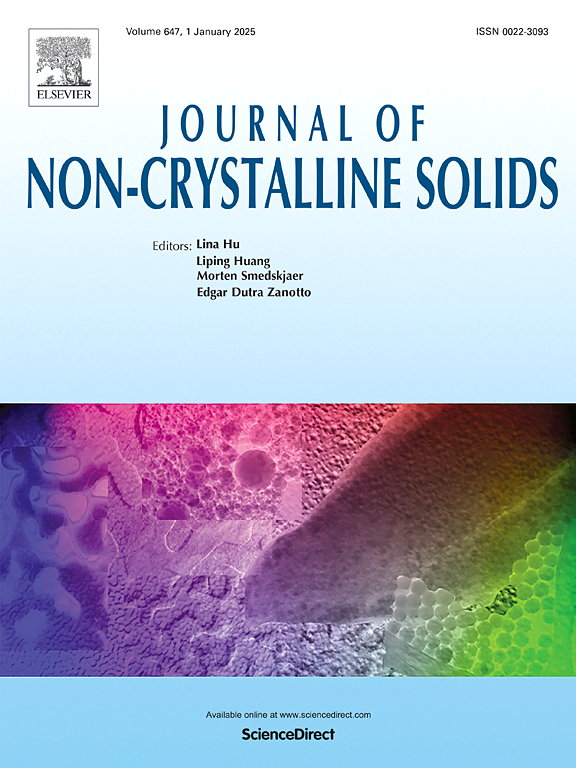Physics-informed machine learning for Na-Ion conductivity and activation energy
IF 3.2
3区 材料科学
Q1 MATERIALS SCIENCE, CERAMICS
引用次数: 0
Abstract
Glass-based electrolytes are promising for solid-state batteries due to the absence of grain boundaries. However, filtering the compositional space for suitable glass formulations is challenging due to the extremely wide compositional space of multicomponent glasses. Here, we consider a highly consistent dataset of sodium-ion conductive glasses for developing a physics-informed machine learning model (PIML) of ion conductivity and transport activation energy. The PIML achieves a remarkable 99% goodness of fit for conductivity, outperforming classical ML models. Moreover, it predicts conductivity , activation energy (, and pre-exponential factor at various temperatures, even for compositions beyond the training data. Incorporating the Arrhenius equation as a hard constraint enables physically meaningful predictions, especially at varying temperatures. Interpreting the PIML model using Shapley additive explanations (SHAP) highlights oxygen's substantial impact on . Aside from providing progress in the specific field of glass-based solid electrolytes, these findings highlight the ongoing importance of consistent experimental campaigns for high-quality ML predictions.
基于物理的na离子电导率和活化能的机器学习
由于没有晶界,玻璃基电解质很有希望用于固态电池。然而,由于多组分玻璃的成分空间非常宽,过滤合适的玻璃配方的成分空间是具有挑战性的。在这里,我们考虑高度一致的钠离子导电玻璃数据集,用于开发离子电导率和传输活化能的物理信息机器学习模型(PIML)。PIML在电导率方面达到了99%的拟合优度,优于经典的ML模型。此外,它还可以预测不同温度下的电导率(σ)、活化能(Ea)和指数前因子(σ0),甚至可以预测超出训练数据的成分。将阿伦尼乌斯方程作为一个硬性约束条件,可以实现物理上有意义的预测,尤其是在不同温度下。使用Shapley加性解释(SHAP)解释PIML模型强调了氧对Ea的重大影响。除了在玻璃基固体电解质的特定领域取得进展外,这些发现还强调了一致的实验活动对高质量ML预测的持续重要性。
本文章由计算机程序翻译,如有差异,请以英文原文为准。
求助全文
约1分钟内获得全文
求助全文
来源期刊

Journal of Non-crystalline Solids
工程技术-材料科学:硅酸盐
CiteScore
6.50
自引率
11.40%
发文量
576
审稿时长
35 days
期刊介绍:
The Journal of Non-Crystalline Solids publishes review articles, research papers, and Letters to the Editor on amorphous and glassy materials, including inorganic, organic, polymeric, hybrid and metallic systems. Papers on partially glassy materials, such as glass-ceramics and glass-matrix composites, and papers involving the liquid state are also included in so far as the properties of the liquid are relevant for the formation of the solid.
In all cases the papers must demonstrate both novelty and importance to the field, by way of significant advances in understanding or application of non-crystalline solids; in the case of Letters, a compelling case must also be made for expedited handling.
 求助内容:
求助内容: 应助结果提醒方式:
应助结果提醒方式:


